
Growing Carrots: Sowing, Care & Harvesting
Some people call them carrots, others prefer carrots. No matter what you think of this healthy and tasty root vegetable, here you can find out everything you need to know about sowing, growing, harvesting or mixed cultivation of carrots.
This Article Contains:
Quick Overview
Planting Carrots: Location & Soil
- Light requirement: sunny
- Nutrient requirement: medium
- Water requirement: medium
- Soil: loose, sandy, stone-free and deep, high humus content
Sowing Carrots: Spacing and Sowing Depth
- Planting depth: approx. 0.5 cm/0.2 in (light germinator)
- Germination temperature: 18 - 22 ° C/64.4 - 71.6 ° F
- Planting distance: 3 cm/1.2 in
- Row spacing : 30 cm/11.8 in
Growing Carrots: What You Need to Know
Gardeners and farmers use the cultivated carrot (Daucus carota subsp. sativus), which is derived from the wild carrot (Daucus carota subsp. carota). Both belong to the umbellifer family (Apiaceae). The wild form is widespread in West Asia, Europe and North Africa and probably originates from the meadows and steppes of the Near East. In fact, only the long and larger varieties are usually referred to as carrots, while the short and rounder varieties are called carrots. However, most people use the term as a synonym, which is what we will do in this article.
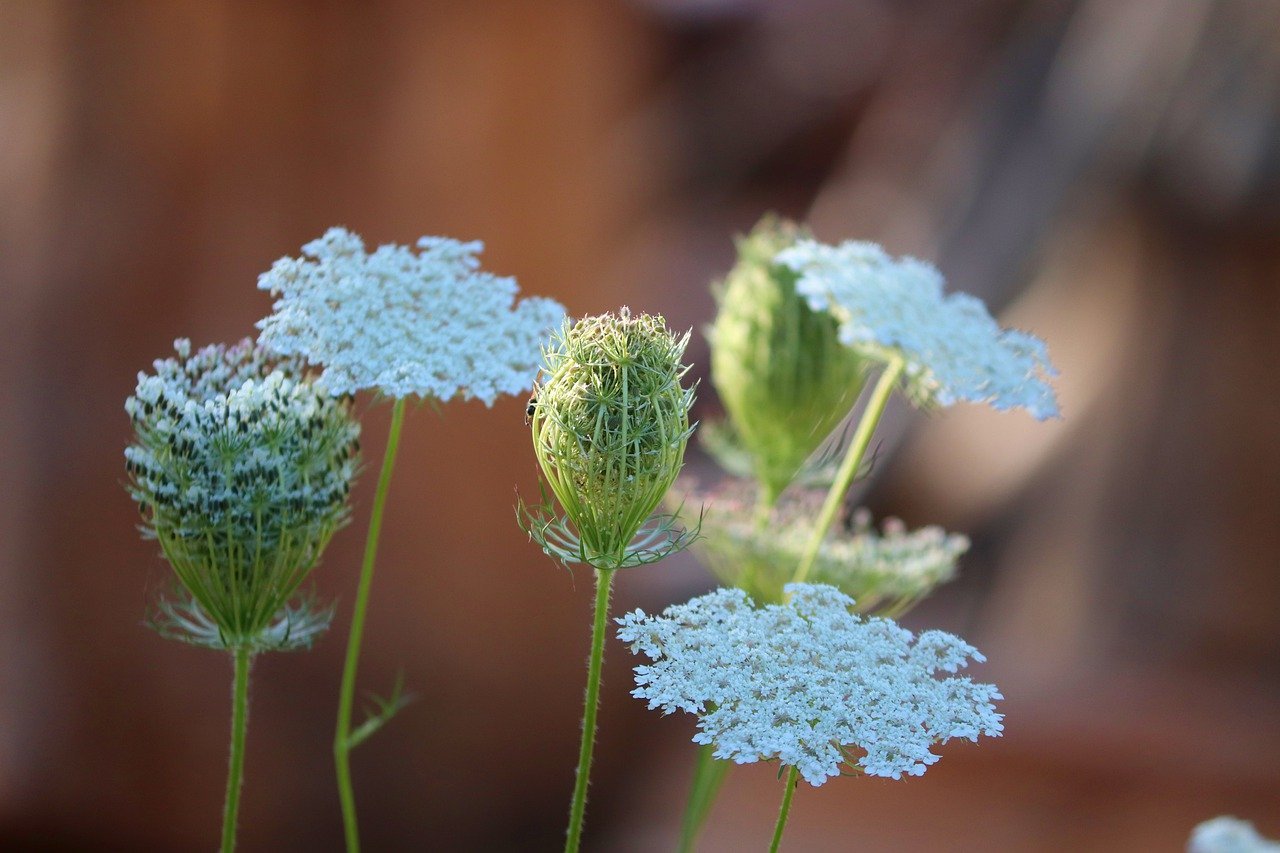
Carrots are actually biennial plants, but are only cultivated as annuals, except for seed production. In the first year, the plant forms a pinnate rosette of leaves and a taproot. This is where the plant stores all the important minerals and nutrients. The carotene content is the highest in carrots compared to all other vegetables. The pigment gives carrots their typical orange color. Vitamin A, biotin and potassium are also present in the storage organ.
Carrot Varieties at a Glance
Most carrot or carrot varieties are red-orange in color. Like the 'Rodelika' variety, for example. This aromatic, orange-red variety can be stored particularly well. It is also suitable for cultivation on heavy soils. In addition to classic elongated carrots, there are also varieties that produce spherical tubers. One example is the variety 'Pariser Markt', a short, spherical, early variety with a sweet taste and strong orange coloring.

Discover Numerous Carrot Varieties!
In our library you will find information on the individual varieties with cultivation periods, tips on planting and harvesting. You will also find good and bad neighbors to help you plan a mixed crop.
View Library NowYellow Carrots, Red Carrots, Purple Carrots
However, there are also purple varieties that contain the coloring anthocyanins. They are considered to be a more original form and heirloom variety of cultivated carrot and were also used in ancient times. One example of this is the 'Gniff' carrot. This storage carrot is particularly beautiful to look at with its purple color and white core. The variety of colors of carrots goes even further and varieties such as the carrot 'Jaune du Doubs' or 'Sonnenmöhre' form yellow carrots. The variety 'Maruschka' stands out with its creamy white roots.
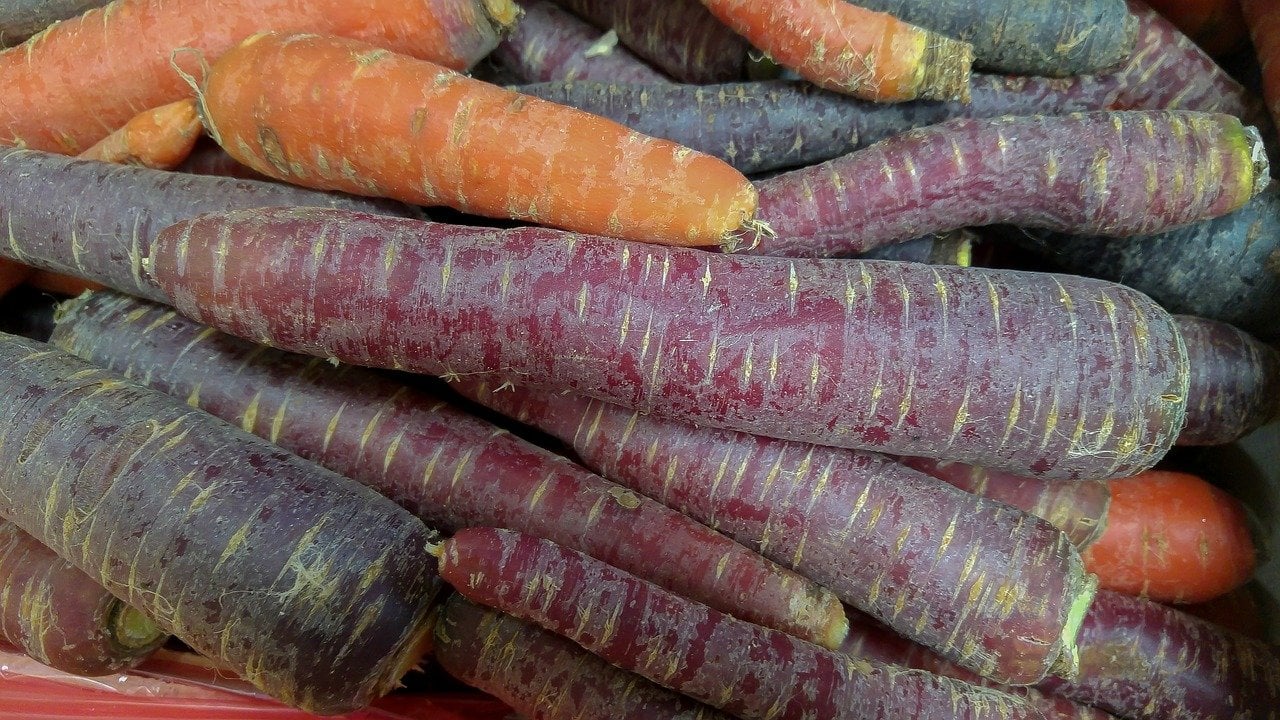
Sowing Carrots: Location and Soil
To ensure that the carrots can spread well in the soil, they prefer to grow in a sunny location in humus-rich and deep, loose soil. They prefer slightly sandy soil, as this makes it easier for their roots to develop. If your soil is too heavy, you can improve it with sand. This loosens up the structure a little. If you have created no-dig beds, the soil structure will be nice and loose and the carrots will grow in any type of soil without any problems. The soil in the bed should also be evenly moist to prevent the carrots from cracking or becoming woody.
Otherwise, carrots are preferably sown directly into the bed. The small seedlings do not tolerate planting out so well, which is why they are usually not grown. As light germinators, carrots are not sown particularly deep and a sowing depth of up to one centimeter is sufficient. You can find More Tips and Tricks for Sowing Carrots in this article.
Fertilizing and Watering Carrots: How to Do It
Carrots are medium feeders and like humus-rich soil, but should never be fertilized with fresh manure. This also applies to the fall before sowing. It is therefore better to use mature compost, which you work thoroughly into the bed before sowing. According to Charles Dowding's no-dig method, the bed is fertilized once a year with a layer of compost about 2.5 cm/1 in thick, which the plants can feed on throughout the year.
It is important for healthy carrot growth to water evenly. If moisture levels fluctuate too much, the roots can burst open. After heavy rainfall, the soil around the rows should therefore be loosened with a pitchfork. To ensure balanced soil moisture, you can lay a thin mulch layer of grass clippings or comfrey leaves around the carrots. If the mulch layer is too thick and strawy, it can attract pests. If your soil is too moist, you can build small dams on which you can grow the carrots (dam culture).

Carrots: Diseases and Pests
Carrot Fly (Chamaepsila Rosae)
The adult flies lay their eggs next to the carrots in the soil. The hatched larvae feed on the carrots by eating their way through the root tissue. In doing so, they leave burrows in which their excrement is deposited. The carrots turn brown and begin to rot. The pest produces several generations within a year, with the first generation producing larvae that feed in June. The second generation becomes active from August.
Prevent Carrot Fly on Vegetables
Close-meshed vegetable protection nets from May and mixed cultivation with leeks or onions have a preventative effect. The pests also avoid windy locations. Also take a cultivation break of at least 3 years!
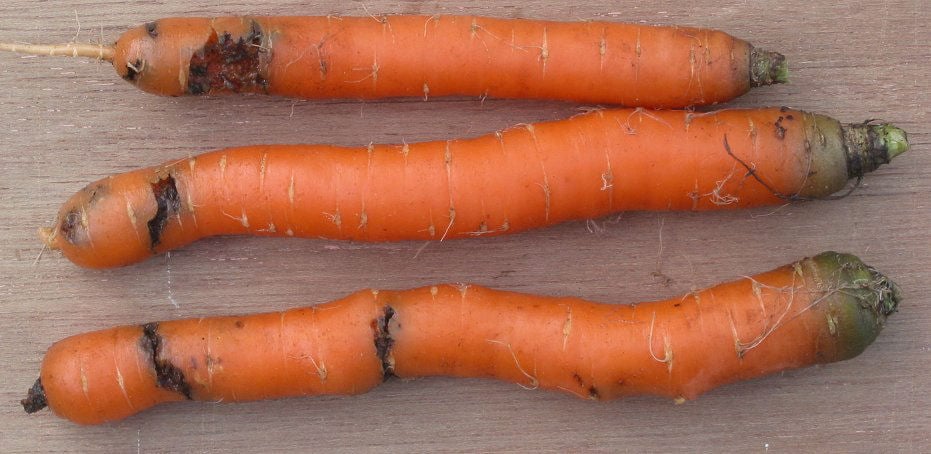
Root Galls on the Carrot
Like all nematodes, the root gall nematode is a very small (approx. 0.5 mm/0.02 in) eel-shaped worm. It lives in the soil and attacks plant roots by penetrating them. It forms nutrient cells inside the root, causing the root tissue to become gall-shaped. The galls look like small ulcers. They should not be confused with the root nodules of the Fabaceae, which function symbiotically and do not damage the roots. The root gall manages to reprogram the root cells in such a way that they optimally supply the invader with nutrients. As a result, many plants wither or die because they no longer have enough energy for their own growth.
Preventing and Combating Root Gall Blight
Preventative measures include observing the crop rotation and planting calendula and marigolds. A broth made from the flowers should also drive away the root gall. To do this, boil 400 to 500 g/14 to 18 fl. oz. to of the flowers (also with herbs) for 30 minutes and sieve the plant material. Water the infested plants with the broth. Use the broth quickly to prevent fermentation.
Carrot Blight (Alternaria Dauci)
The fungus mainly occurs in high humidity. It attacks not only carrots, but also parsley, celery, parsnip, dill, cabbage and tomatoes. Symptoms are dark, discolored leaves and later black spots on the roots (carrots). The infestation usually only occurs towards the fall, i.e. towards harvest. A hot water treatment after harvest is therefore recommended (approx. 30 minutes at 50 °C/ 122 °F) in order to extend the storage life somewhat. If an infestation is detected earlier, you can water with horsetail broth and spray the cabbage. Use approx. 1 kg/2.2 pd of fresh horsetail for 10 liters/ 21 pt of (rain)water. Cut up the herb and leave it to infuse in the water for 24 hours. Then simmer for 30 minutes at a low temperature. Strain the plant residue with a cloth or sieve. It is best to use in sunny weather, as heat intensifies the effect.
Prevent Carrot Blackening
Preventive measures ensure that the plants dry out quickly. These include Dam construction, cultivation in windier areas, sufficient plant spacing. Use mature compost (not too fresh plant residues), work it well into the soil and take a break from cultivation for at least 3 years.
Harvesting and Storing Carrots
Harvest your carrots as soon as the tips of the leaves turn yellow or reddish. Don't wait too long, as the roots may burst, crack or develop hair roots. Loosen the soil with a spade and then pull the carrots out of the ground by the leaves. Only roughly remove the soil from the carrots, as this makes them keep longer.
Depending on the variety and storage method, carrots can be stored for several months. In our article on Storing Vegetables, you can find out the best way to store carrots.
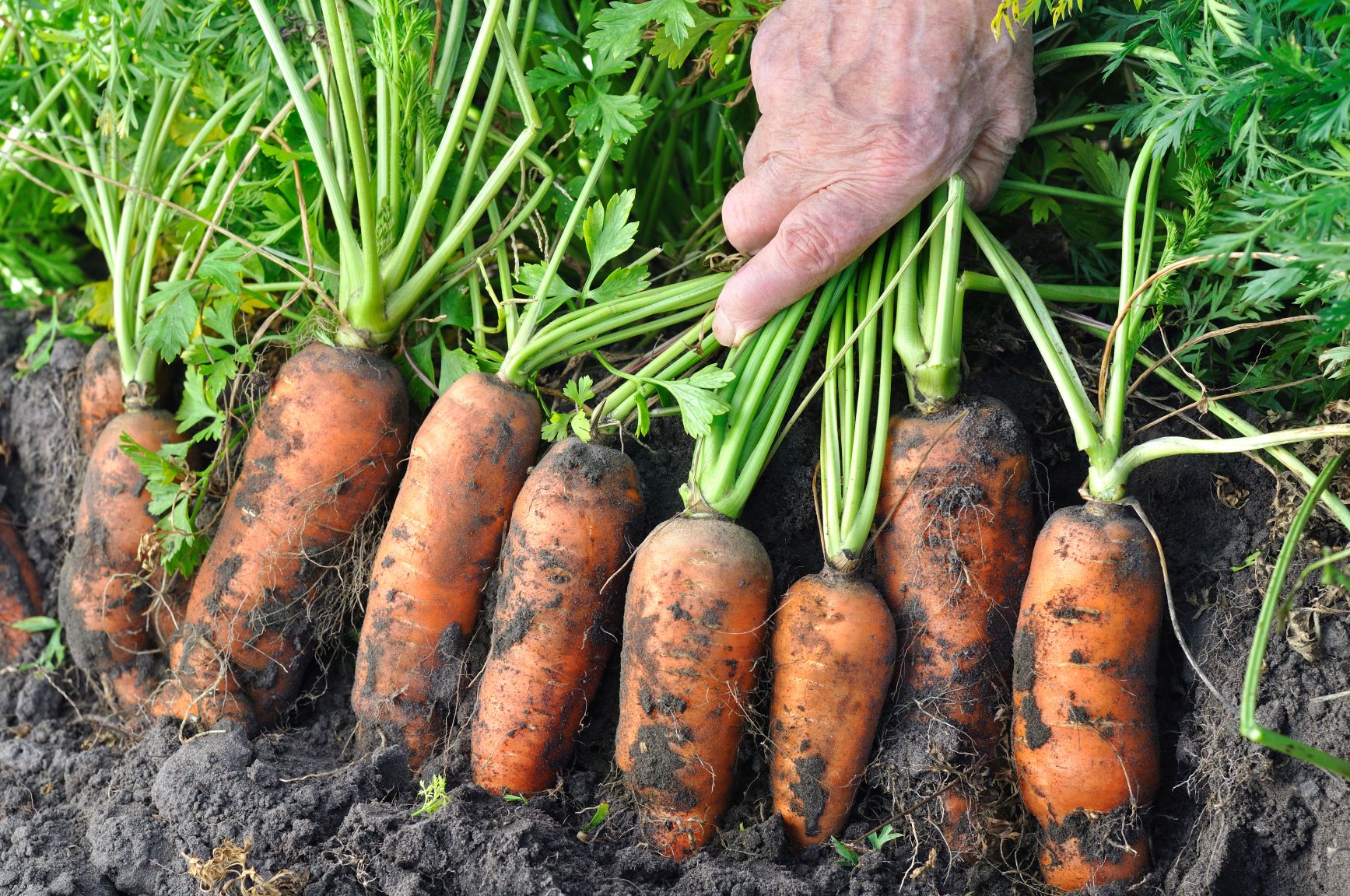
Processing Carrots
Whether in salads or soups: The carrot is versatile. It is also tasty as an oven vegetable or caramelized in a pan. Grated carrots can also be mixed into bread or cake batter for baking.
What many people don't know: The herb is also edible. It can be used to make a delicious pesto with just a few ingredients. Put the cabbage in the blender with olive oil, salt, garlic, Parmesan cheese (optional) and pine nuts. If you don't like pine nuts, you can also use sunflower seeds or walnuts. To preserve the pesto for longer, use boiled screw-top jars and cover the green mixture with olive oil at the end.

I hope I've whetted your appetite for growing carrots. If you have any questions or comments, please write to us at [email protected].
Want to get helpful gardening tips all year round and plan your own beds in the best possible way? Then register here or download the Fryd app for Android or iOS.
Fryd - Your digital bed planner

Isabell
Isabell studies agricultural sciences and loves to be surprised by nature and its complexity again and again. Herbs - whether gathered wild or in the garden - are her passion.
Learn MoreCurrent Topics in the Community
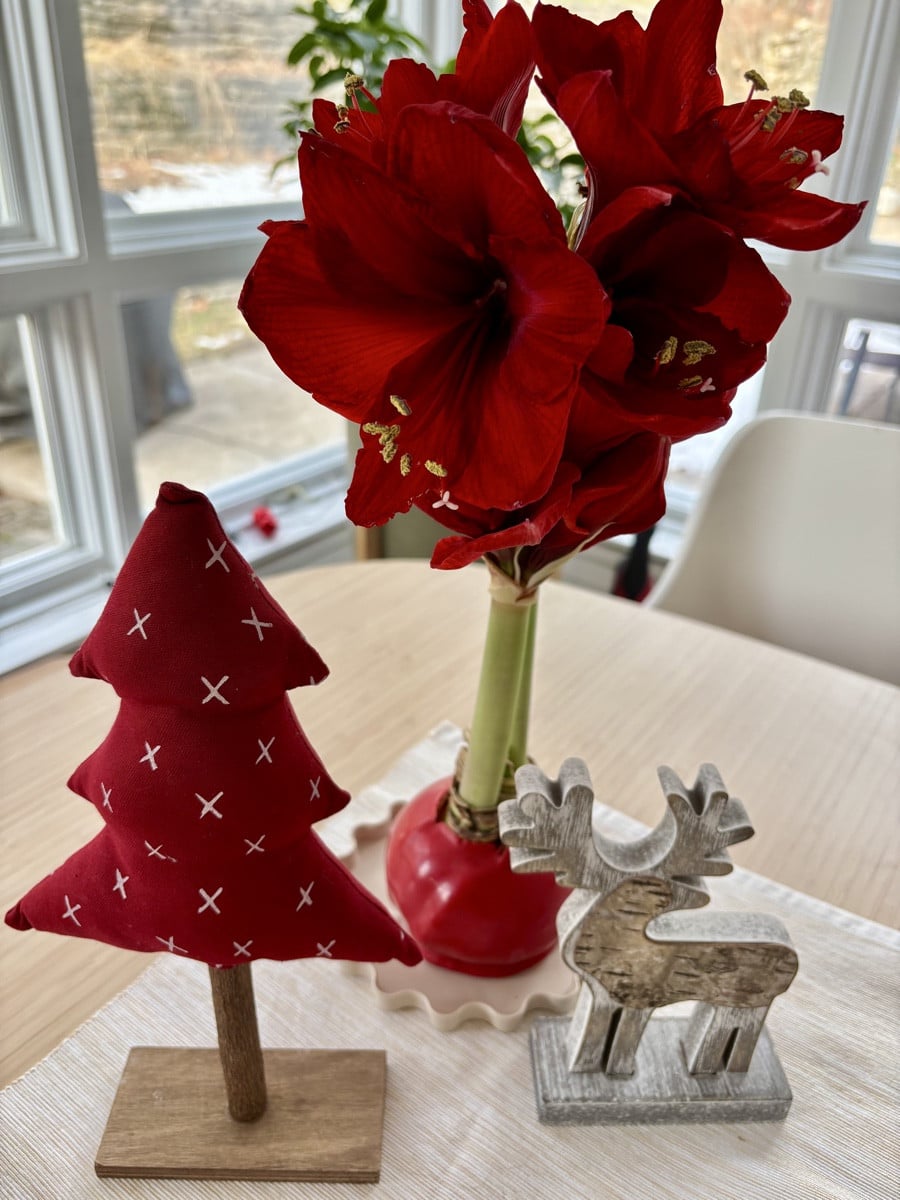
Liked 2 times
Have a relaxing and happy festive season! Looking forward to the upcoming gardening season here in the community 😊⭐️🎄✨
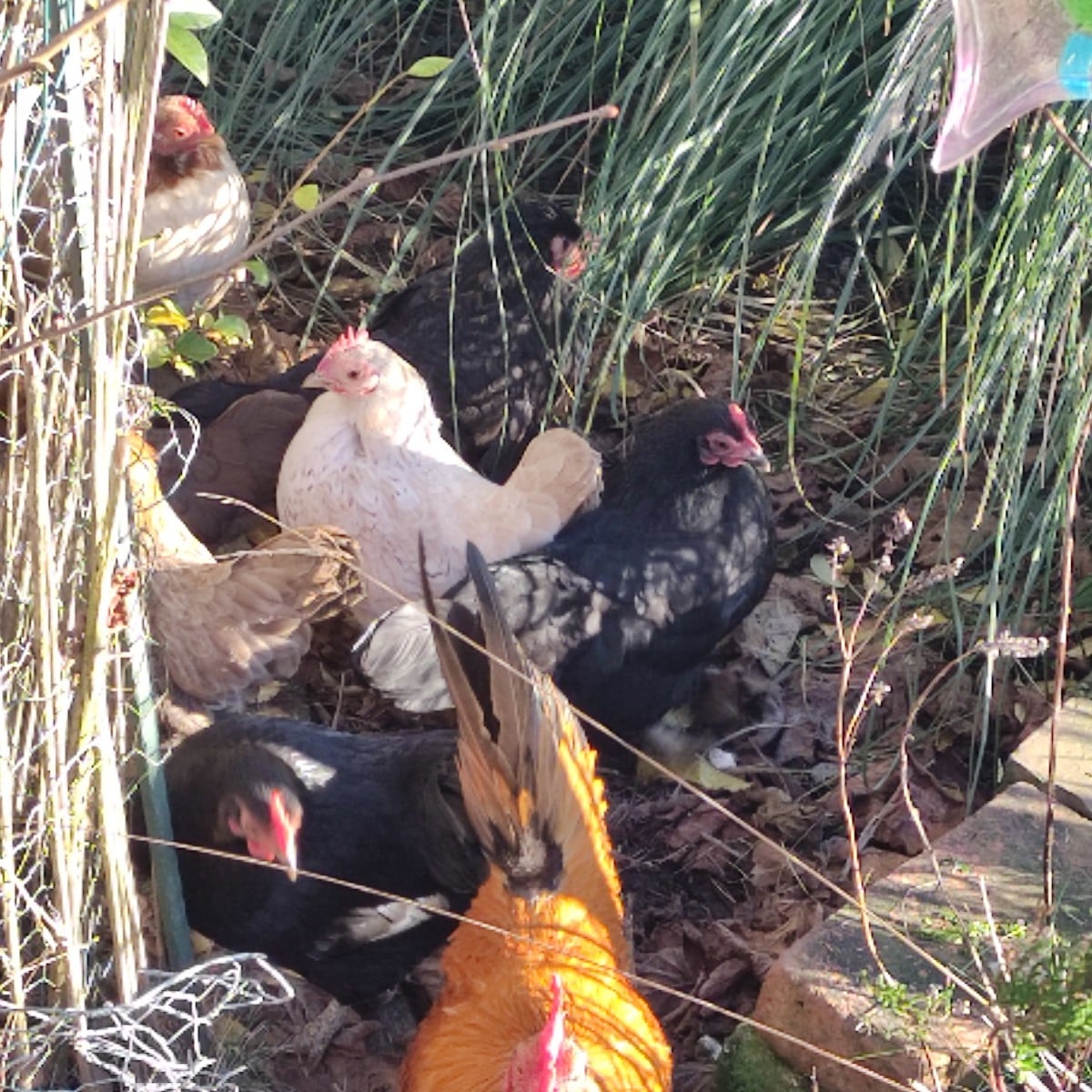
Liked 2 times
The chickens are not happy about the cold weather.
Show 1 answer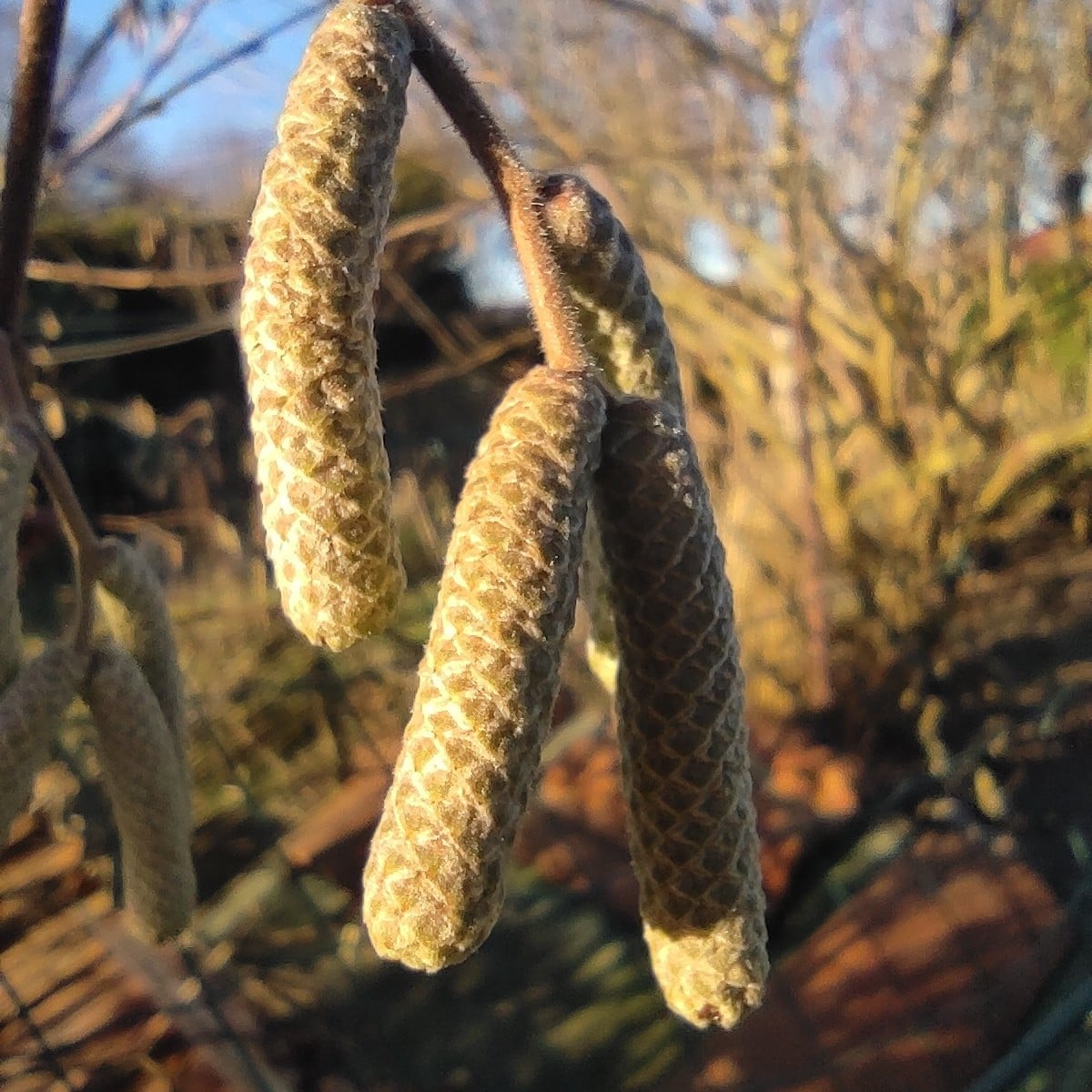
Liked 1 times
Without words
Show 1 answerPopular Articles

Overwintering Parsley: How to Do It Successfully

How to Grow Lettuce in Winter: Varieties, Sowing, Harvesting

Growing Sage Plant: Tips for Sowing and Harvesting

What Herbs Can Be Planted Together?

Create & Design a Permaculture Garden

Overwintering Plants: Tubs, Pots and Raised Beds

Pruning, Fertilizing & Propagating Currants: Care Tips

Pruning Raspberries: How to Do It

Vegetable Garden With Greenhouse: How to Use Greenhouse Effect

Winterizing Beds and the Garden: How to Do It
FAQ
Carrots thrive in a sunny location with humus-rich and deep, loose soil. The soil in the bed should also be evenly moist.
Do carrots grow as annuals or biennials?
Carrots grow as biennials and therefore only flower and bear fruit in the second year of cultivation. They are usually grown as annuals in order to harvest the roots. Individual plants are only left standing for seed production.
How to fertilize carrots properly?
It is best to fertilize your bed once a year with a good layer of compost. A layer about 2.5 cm/1 in thick is enough for the plants to feed on throughout the year. Never use fresh manure to fertilize.
How do I harvest and store carrots?
To harvest the carrots, simply pull them out of the soil. To do this, you can loosen the soil beforehand with a digging fork. Don't wash the carrots afterwards, just roughly remove the soil so that you can store them for longer.